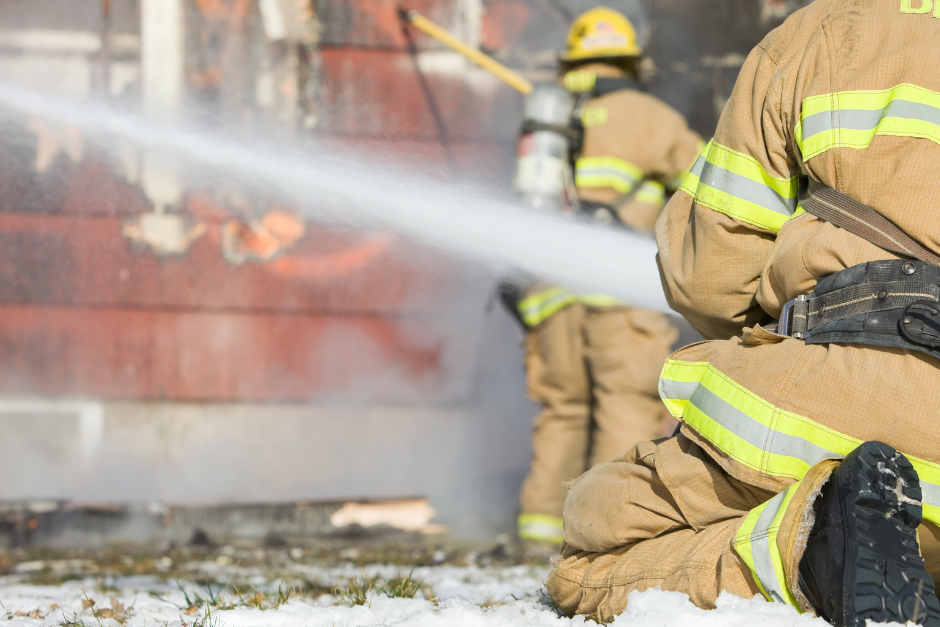Did you know December, January and February are peak months for house fires? More home cooking and heating as well as holiday decorations, winter storms and the use of candles – all increase the risk of fire during the cold months.
Each year, about 900 people die in winter home fires in the United States and more than two billion dollars are lost in personal property.
While cooking is the leading cause of home fires, our heightened need for heat and energy during this time of year and the misuse of equipment like space heaters and portable generators contribute to the vast majority of injuries and deaths in home fires (and carbon monoxide poisonings.)
Safety Strategies
Being thoughtful about how you use your stoves, heaters and electricity can go a long way to reducing the risk of a fire.
- Never leave something that is cooking unattended and make sure the stove is off when you leave your home.
- Create kid- and animal-free zones near heaters, stoves and fires.
- Keep anything that is flammable like curtains, dishtowels, etc. at least three feet way from your stove, heating unit, or fireplace.
- Turn off your stove, fireplace or heating unit when you leave the room or before you go to bed.
- If you are using a portable heater, make sure it has an automatic shut-off so if it tips over, it shuts off.
- Plug portable heaters directly into wall outlets. Never use an extension cord or power strip for these.
- If you are using your fireplace, keep a glass or metal screen in front to prevent embers or sparks from jumping out and starting a fire.
- Do not burn paper in your fireplace.
- Before going to sleep or leaving, make sure the fire in your fireplace is completely out, put the ashes in a metal container with a lid and store the container outside at least three feet from your home.
- Have your chimney inspected and cleaned before using your fire place or wood stove.
Smoke and Carbon Monoxide Detectors
A key to keeping your family safe during the winter fire season is Installing and maintaining smoke and carbon monoxide detectors in your home.
Consider the following:
Detector type – The U.S. Fire Administration recommends using ionization smoke detectors, which are extremely sensitive and can alert you to a fast-moving fire, and photoelectric smoke detectors that sense slow-moving fires. Dual sensor smoke alarms include both technologies to address the variety of fires that can occur.
Location – Everyone in the family should be able to hear the alarm. Install your alarms near sleeping areas, inside any bedroom where the door is typically shut and on every floor of the house, including the basement. Wall-mounted smoke alarms should be four to 12 inches from the ceiling, and ceiling-mounted models at least four inches from the nearest wall.
Maintenance – Smoke alarms can only protect your family when they are in good working order:
- Test units monthly.
- Install new batteries immediately when the low-battery warning alarm sounds or at least once a year.
- Clean smoke alarms regularly by vacuuming them with a brush attachment.
- Replace smoke alarms every 10 years to achieve optimum performance.
Preparation
Finally, have a fire emergency plan in place for your family.
- Everyone in the family must know how and where exit the home in case of a fire.
- Have an agreed-upon meeting location away from the house. Designate a family member to call 911 after getting to the safe location.
- Take some time to teach your children about what they must do if there is a fire (e.g. stay close to the ground when exiting the home, stop, drop and roll if their clothes catch fire, get out stay out, etc. )
There are many resources available for teaching fire safety to children from the Red Cross, Safe Kids World Wide and other organizations.
If you need assistance developing a fire plan for your home or business, give us a call TSS at (877) 225-1431. We are here to help with all your safety needs!

